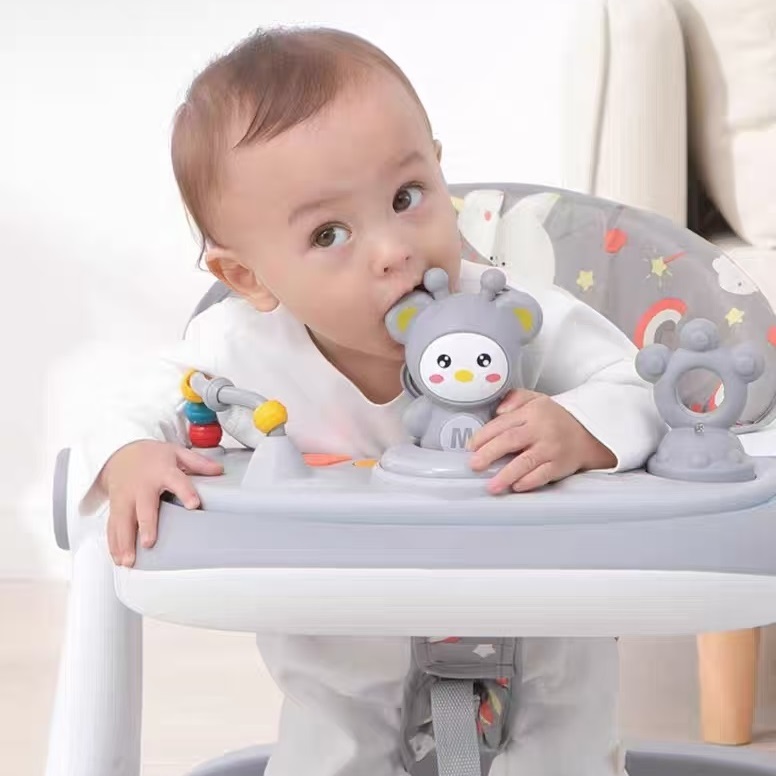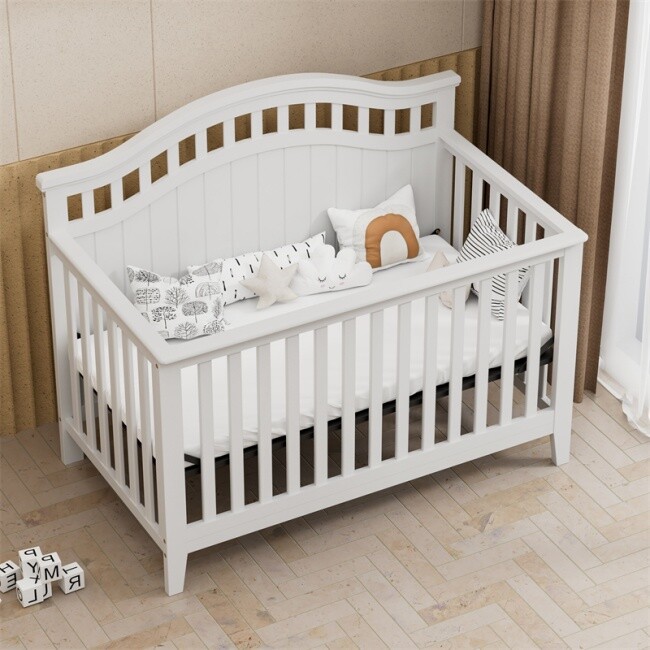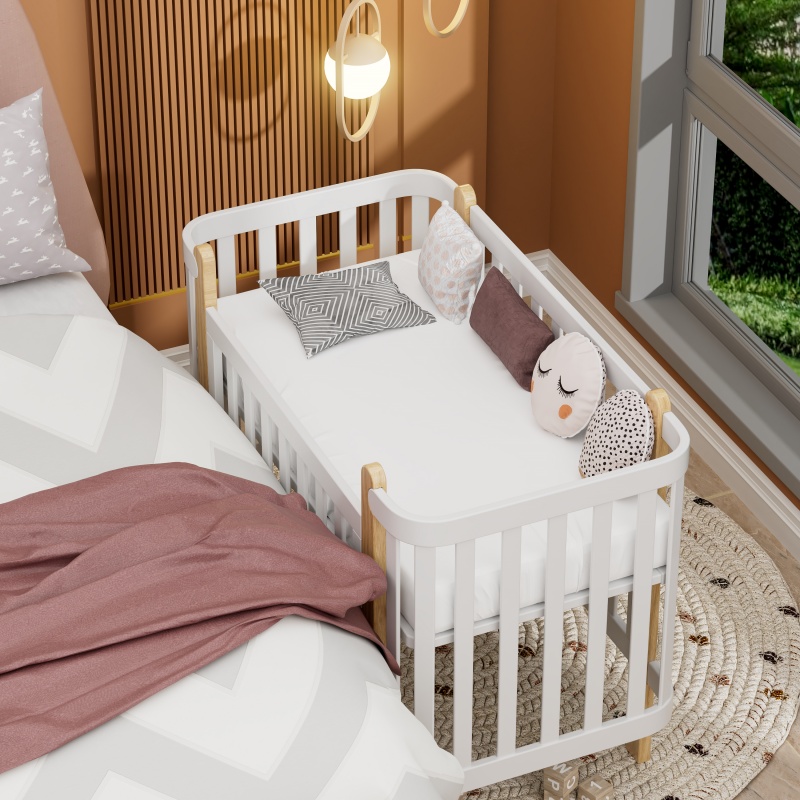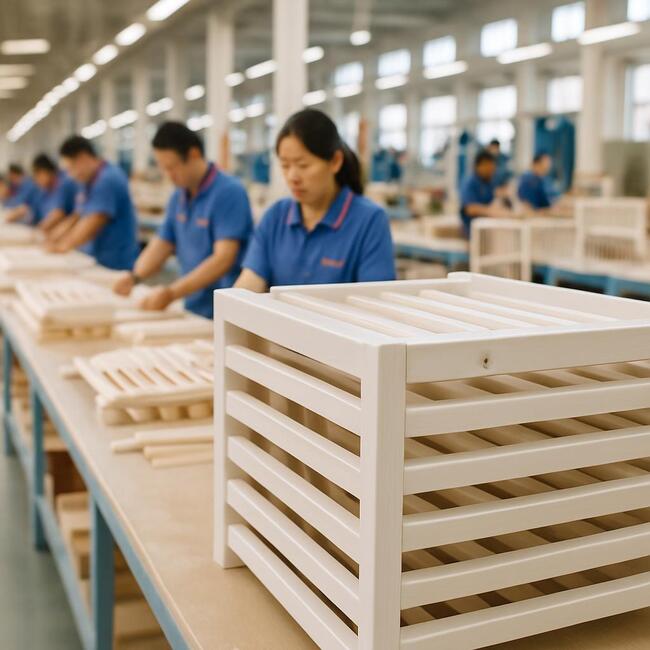Watching babies roll over, sit up, and take their first steps—each growth milestone brings joy to parents. During this journey filled with anticipation, the baby walker often becomes a popular topic among caregivers.
Many parents believe that walkers can help their babies learn to walk sooner, while others worry that they may interfere with natural development.
In fact, the debate surrounding baby walkers has a long history. On one hand, walkers appear to give babies a chance to experience the joy of walking early. On the other hand, research from professional institutions has raised numerous concerns.
In this article, we’ll take a scientific approach to child development, objectively examine whether walkers truly help babies learn to walk, and explore safer, more effective ways to support early walking skills.
The Science Behind Learning to Walk
A baby’s first step may seem simple, but it is actually a delicate and complex physiological process. To understand whether a walker is truly beneficial, we must first explore the scientific principles behind infant motor development.
Stages of Motor Development
Infant motor development follows a strict physiological sequence: lifting the head, rolling over, sitting independently, crawling, standing with support, cruising (moving with the help of furniture), and finally, walking on their own.
This “head-to-toe” developmental progression is not random—it is guided by the maturation of the central nervous system.
According to the American Academy of Pediatrics, each movement stage lays the foundation for the next. Skipping a stage may affect the development of overall motor coordination.
Cultivation of Key Abilities
Walking depends on well-developed core stability and strength in the lower limbs. The crawling stage is especially important for developing the muscles in the waist, back, and limbs.
Through repeated attempts to sit up and stand with support, babies gradually develop three-dimensional spatial awareness. Developing a sense of balance involves exploration, repeated attempts, and self-correction—opportunities that baby walkers fail to provide.
This process depends on proprioception, the body’s internal sense that helps it detect the position and motion of different limbs and joints. As babies explore independently, their brains continually receive feedback from muscles and joints, gradually building accurate movement patterns.
The Neural Mechanism of Natural Learning to Walk
The Harvard University Center on the Developing Child has found that the process of learning to walk is driven by the brain’s ongoing “trial-and-error learning.” Each fall and posture adjustment helps to strengthen neural pathways.
Individual Differences in Developmental Timing
It’s important to understand that children typically start walking anywhere between 9 and 18 months, reflecting a wide range of normal development. This variation depends on a number of factors, including genetics and environmental stimulation.
According to World Health Organization growth standards, around 50% of infants can walk independently by 12 months, while 97% achieve this milestone by 18 months. This highlights that allowing babies time to develop at their own pace is often more beneficial than relying on assistive devices.
What Is a Baby Walker and How Is It Used?
There are two main types of baby walkers on the market, each with a distinct design concept and intended use.
Traditional Sitting Walker
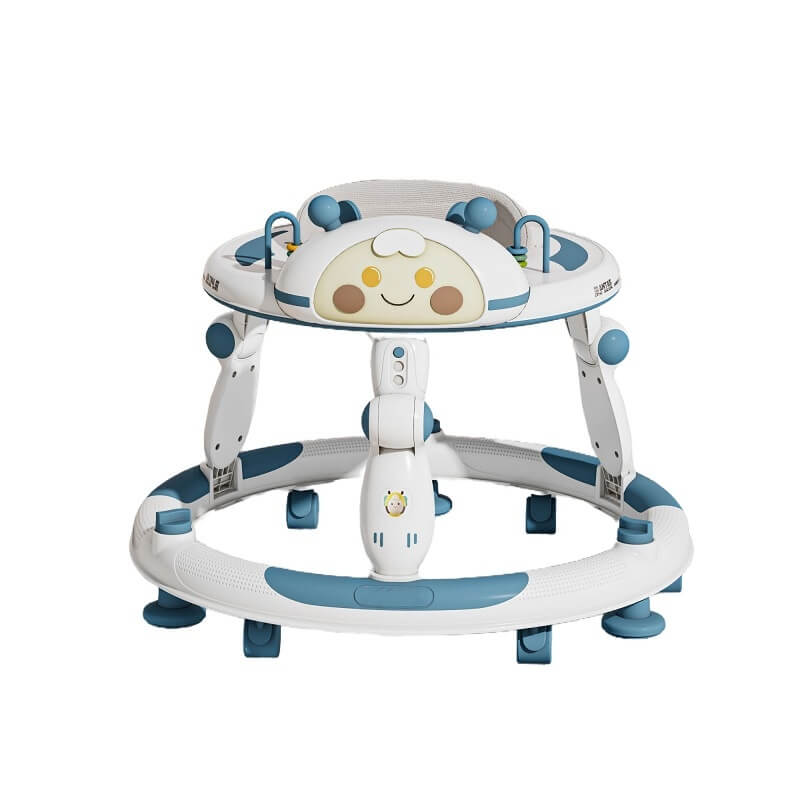
This style of walker usually features a circular base, a wheeled frame, and a fabric seat that suspends the baby in the center. The baby sits in the seat with both feet touching the ground and propels the walker forward by pushing off the floor. The seat height is usually adjustable to suit babies of different heights. When using this type of walker, parents should ensure the following:
- Adjust the height so the baby’s feet can fully touch the ground
- Use it only on flat, open surfaces
- Limit each use to no more than 15–20 minutes
- Always supervise the baby during use
Push Walker
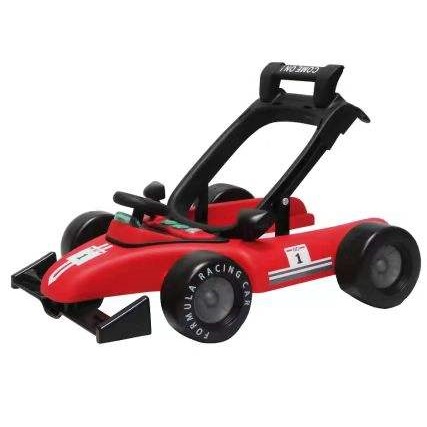
This type of walker resembles a toy stroller with wheels. The baby stands behind it and pushes it forward while holding onto the handle. Its features include:
- The baby must be able to stand unassisted
- The movement speed is controlled by the baby
- Many models include a brake or speed-limiting mechanism
- Some products have built-in toy panels for added fun
Do Walkers Help Babies Walk Sooner?
Traditional Baby Walkers (Sit-In Walkers)
Traditional sit-in walkers do not actually help babies learn to walk sooner, as many parents might expect. The American Academy of Pediatrics clearly states that these walkers not only fail to promote motor development but may also have negative effects.
Multiple medical studies have confirmed that sit-in walkers do not help develop the key skills babies need for walking—such as coordination, balance, and muscle control. This is because babies are seated and rely mainly on their toes to push off, rather than practicing standing or walking in a natural way.
Even more concerning, a study published in Developmental Medicine and Child Neurology found that babies who used walkers tended to reach the milestone of independent walking 3–4 weeks later than those who did not. This delay is closely linked to the limited opportunities for exploration and self-initiated practice that walkers provide.
Push Walkers (Push Toys)
Unlike traditional sit-in walkers, well-designed push walkers can serve as helpful tools under the right conditions. Their key advantage is that they more closely simulate the natural walking process.
Push walkers differ fundamentally from sit-in designs. They allow babies to remain upright and require them to control their own balance and movement. Once your baby can pull themselves up and begin attempting to walk, a push walker may offer support. It can help them build stability while practicing weight shifting and step coordination.
The British Paediatric Association recommends that push walkers be used when a baby can already stand independently and is motivated to walk—typically between 10 and 14 months of age.
However, pediatric experts emphasize the importance of choosing a safe, ergonomically designed push walker, ideally one with adjustable speed or built-in brakes. It should always be used on a flat surface with adult supervision.
Most importantly, even a push walker should only supplement your baby’s natural learning process—not replace opportunities for independent exploration and movement.
What Is the Real-Life Role of Baby Walkers (If Not for Teaching Walking)?
Despite their name, traditional baby walkers are not effective tools for teaching babies how to walk. So, if they don’t actually help babies walk, why are they still so widely used?
Aids for Temporary Care
For caregivers who need to attend to housework or work for short periods, traditional sit-in walkers can offer a brief “respite.” When placed in a walker, babies can move around independently within a confined area, which temporarily eases the burden of constant supervision.
Expanders of Exploration Space
From the baby’s perspective, walkers can temporarily expand their range of motion. Especially for babies who haven’t yet mastered crawling, walkers offer the chance to experience independent movement for the first time. This new mobility can spark curiosity and expose them to more environmental stimuli.
Entertainment and Sensory Stimulation
Traditional walkers are often equipped with interactive toy trays—featuring lights, sounds, buttons, and mirrors. This makes them more than just mobility aids; they also serve as entertainment centers that stimulate a baby’s vision, hearing, and sense of touch.
From a product design standpoint, many modern walkers are deliberately multifunctional: they not only enable limited mobility but also engage babies with built-in sensory features to capture their attention.
Transitional Aids
Push walkers can provide babies with a sense of psychological reassurance as they practice standing and taking their first steps. As babies begin experimenting with upright positions, push walkers act like mobile supports, giving them added confidence to explore standing and stepping.
Safer Alternatives to Help Your Baby Learn to Walk
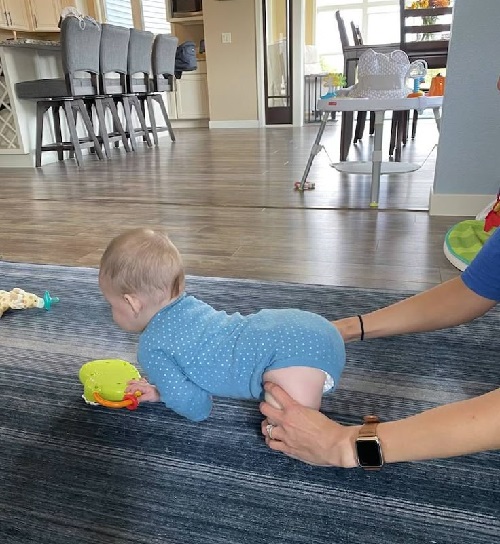
Create a Safe Environment for Exploration
This is the most essential and fundamental step. It’s recommended to set up a dedicated area at home for learning to walk—lay down non-slip mats or thick carpets and remove any objects that could pose a danger.
Fix a stable low table, sofa, or wall-mounted support rail to provide reliable points for your baby to hold onto.
This kind of setup allows your baby to attempt standing and moving at their own pace within a safe environment, helping to develop balance and foster independence.
Encourage Crawling Exercises
Adequate crawling practice forms a crucial foundation for walking. While many parents are eager for their babies to start standing and walking, they may not realize how important the crawling phase is for building core muscle strength.
Pediatric experts recommend providing plenty of tummy time daily and using toys that interest your baby to encourage forward crawling. Setting up small obstacles can motivate your baby to crawl over or around them—enhancing limb coordination and spatial awareness.
It’s important to remember that the natural transition from crawling to pulling up and standing often takes 2–3 months. Parents should patiently support this process.
Parent-Child Interaction and Guidance
Interactive play between parent and baby is one of the most effective ways to encourage walking. Parents can kneel down, face their baby from a short distance, and extend their arms to invite the baby to take steps forward.
When the baby takes their first steps, warm hugs and enthusiastic praise can significantly boost confidence. You can also let your baby push a stable chair or a purpose-built walker—just be sure to control the speed to prevent falls.
Choose the Right Assistive Tools
When selecting assistive tools, prioritize ergonomic and safety-tested products. A stable four-wheeled push cart is generally safer than a traditional walker, but it should have a reliable braking system.
Walker harnesses can be used briefly during outdoor activities to help with balance, though they are not suitable for long-term use.
For older babies, a balance bike can be a great option, providing a natural transition toward independent walking.
Barefoot Practice
In a safe indoor setting, allowing your baby to walk barefoot helps enhance sensory feedback from the soles and supports the natural development of the foot arch.
Letting your baby walk on different surfaces—wooden floors, carpets, non-slip mats—offers diverse tactile stimulation to the brain and helps build proper gait patterns.
If it’s cold or the flooring is hard, soft, non-slip socks are a good alternative. Avoid hard-soled toddler shoes, which can interfere with natural movement.
The American Physical Therapy Association recommends a walking approach centered on “less intervention and more encouragement.” Rather than relying on external tools, it’s better to provide rich movement opportunities. Remember, each stage—from crawling to walking—has unique value. Don’t rush to skip any part of your baby’s natural development journey.
Conclusion
Reflecting on the discussion about baby walkers, one clear conclusion emerges: learning to walk does not require specialized tools—it is a natural developmental instinct within every baby.
Much like a butterfly relies on its own strength to break free from its cocoon, a baby’s path to walking should unfold through natural development and self-guided exploration.
What may seem like “primitive” methods—allowing babies to crawl freely, stand on their own, and explore safely—are in fact the most effective ways to support healthy motor development. These activities support the gradual development of a baby’s muscle strength, balance, and coordination, allowing them to progress toward walking confidently at their own pace.
Scientific studies consistently show that traditional walkers do not accelerate a baby’s ability to walk. However, some parents may still choose to use them to add variety to playtime—provided they do so safely, with awareness, and in moderation.
Recommended Related Articles:

